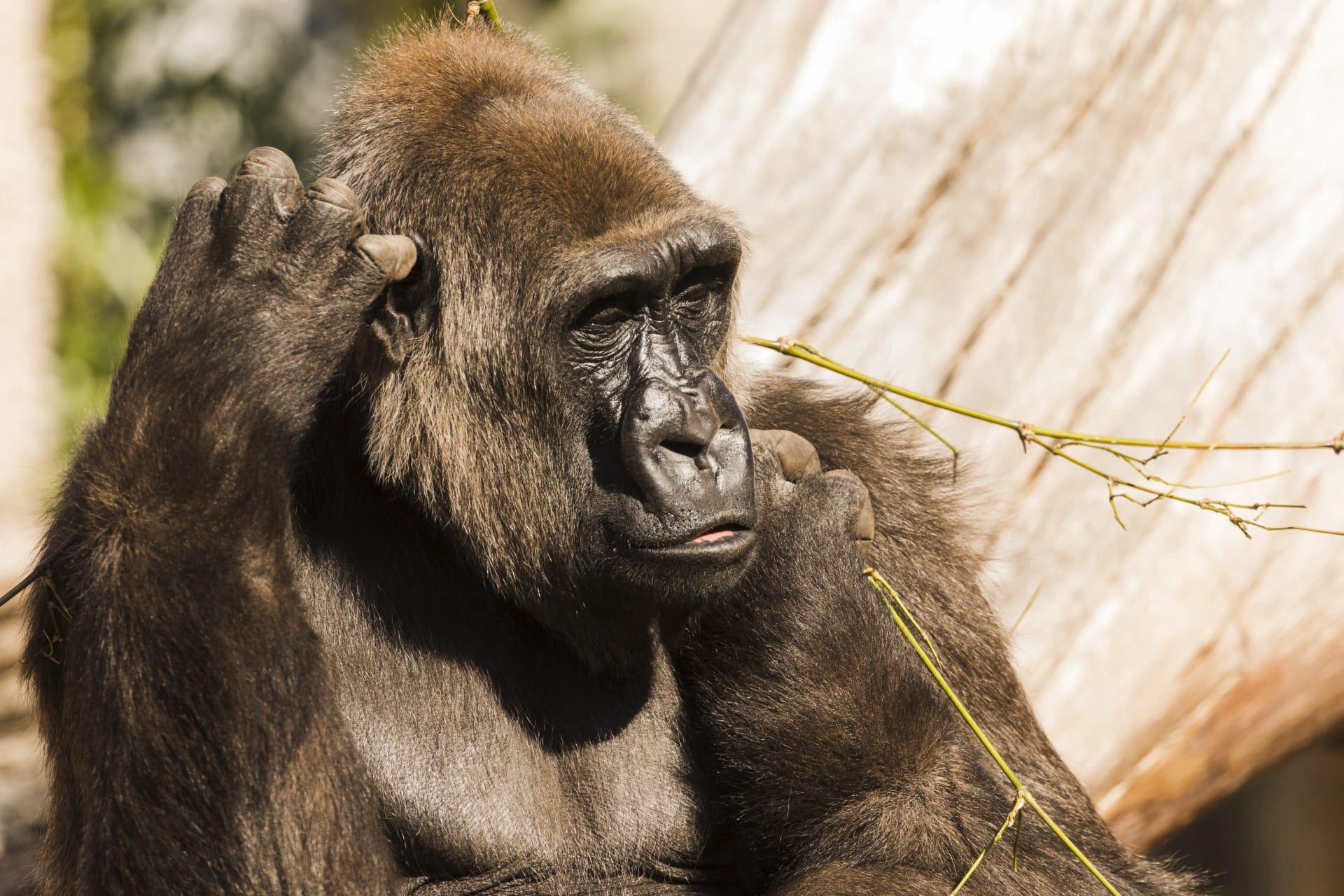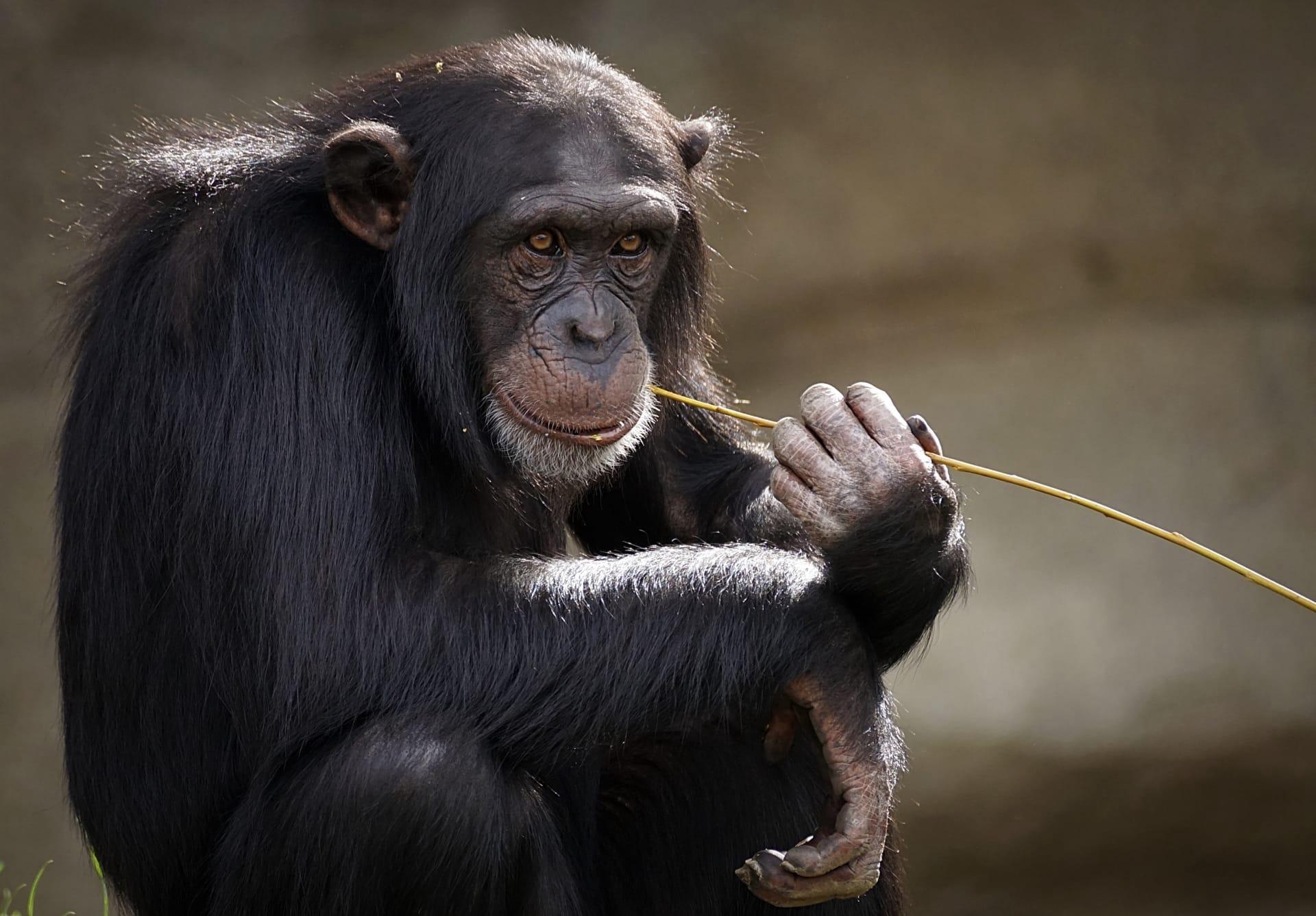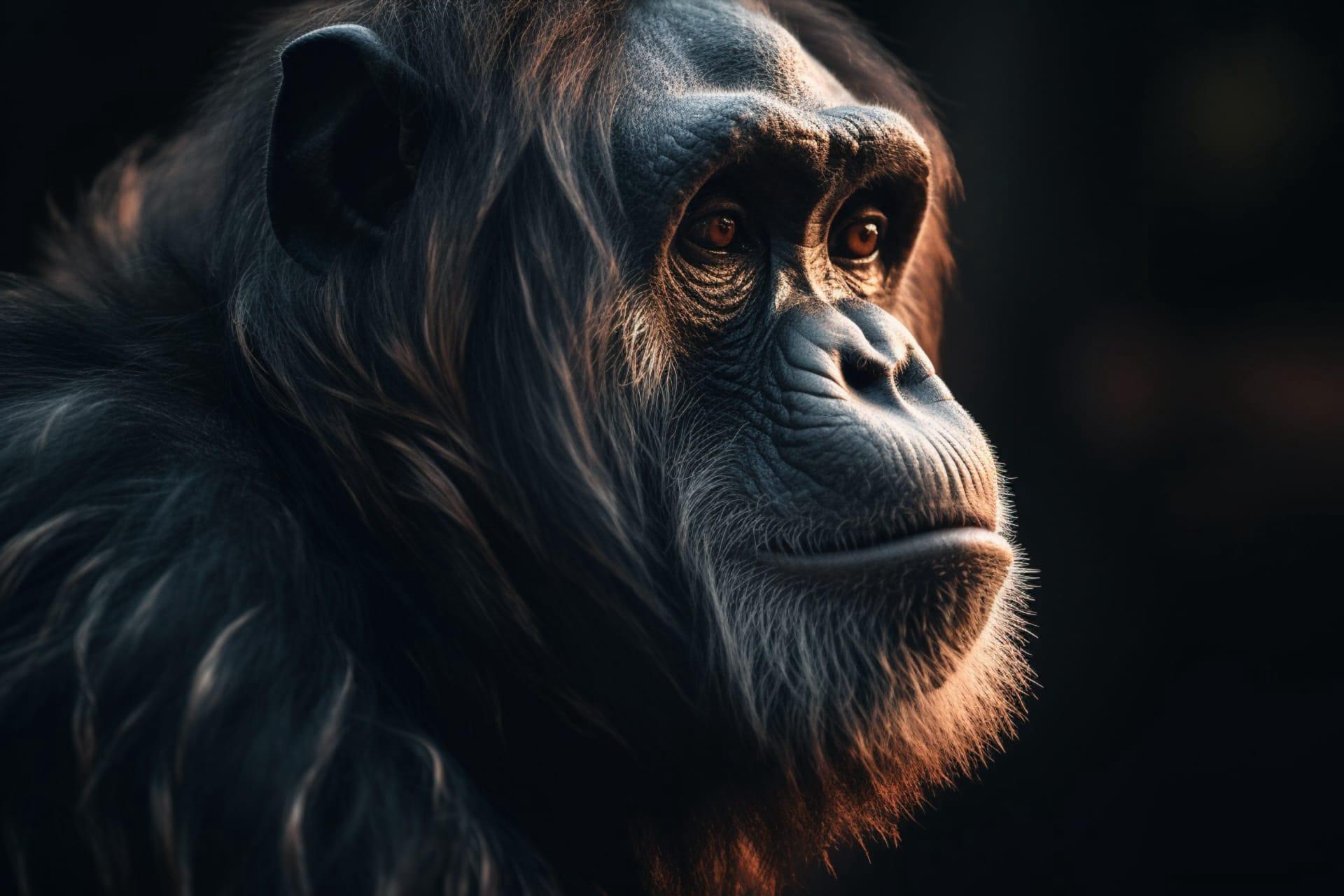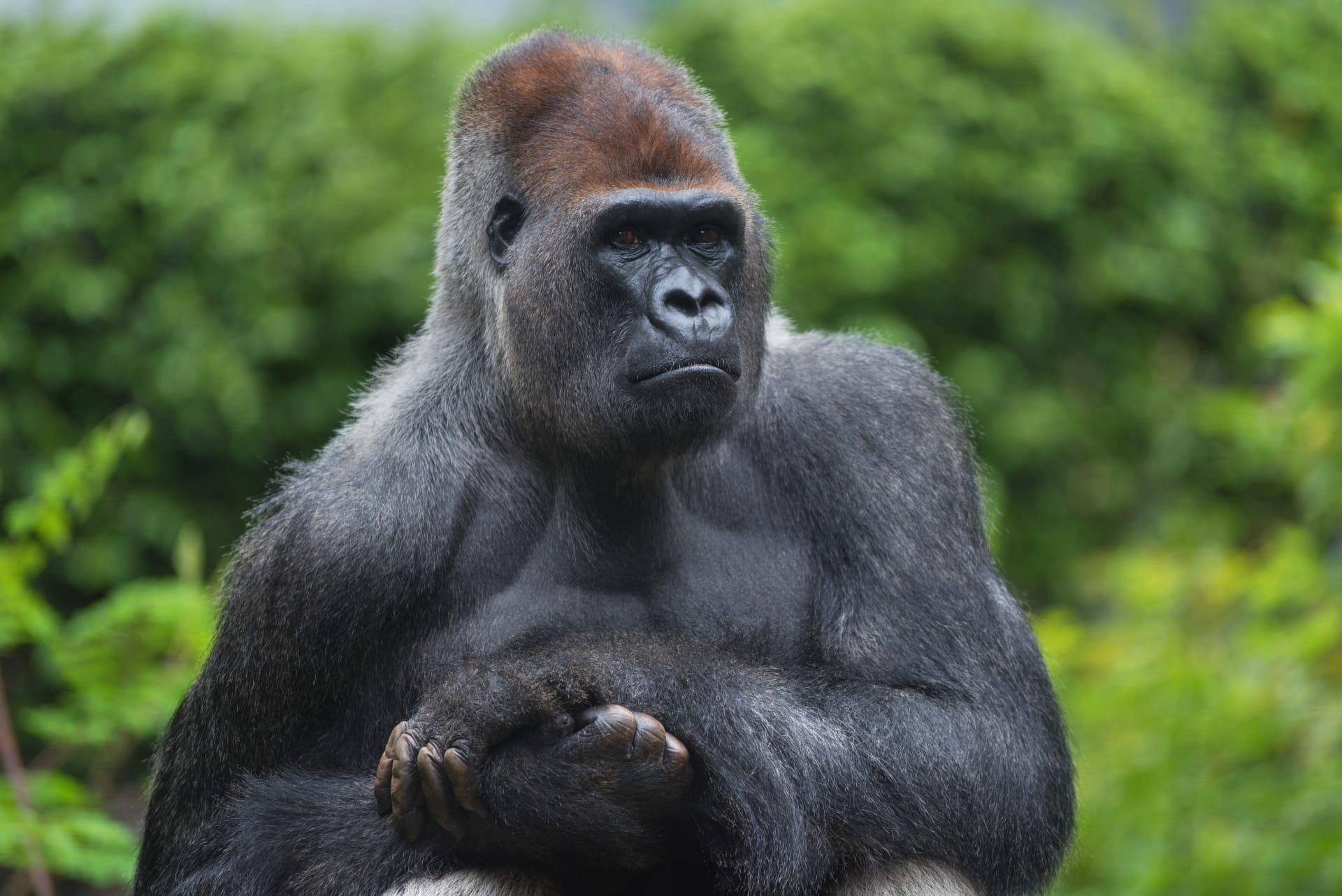Gorilla Characteristics
- Home /
- Mini Encyclopedia /
- Animal /
- Gorilla Characteristics
1
Gorillas, the largest of the great apes, exhibit some awe-inspiring physical characteristics. Adult males, known as 'silverbacks' due to their distinct silver-colored fur on their backs, can stand at a towering height of about 5.9 feet when upright and weigh a hefty 350 to 500 pounds. Females are generally smaller, typically reaching heights of around 4.5 feet and weighing between 200 to 300 pounds. Beyond their size, gorillas have a remarkable muscular build, especially in their arms, which are longer and stronger than their legs. This adaptation aids in their primary mode of locomotion - knuckle-walking. Gorillas have a lifespan that echoes our own, living up to 35 to 40 years in the wild, and some in captivity have reached the venerable age of over 50 years.
The hands of a gorilla are its most fascinating organ, offering a blend of strength and dexterity. These hands are almost human-like, featuring opposable thumbs that enable them to grasp and manipulate objects with remarkable precision. Yet, the real power lies in their grip. A gorilla's hand can exert a force up to four times stronger than the strongest human grip, thanks to their muscular and broad palm, coupled with a unique tendon structure. This phenomenal strength is essential for climbing, foraging, and building nests. Their tactile sensitivity allows them to gently peel fruits or groom one another, showcasing a tender side to their otherwise formidable presence.

2
Question: "What do gorillas eat, and how much food do they consume daily?"
Answer: Gorillas are predominantly herbivorous, with their diet primarily consisting of leaves, stems, fruit, and bamboo. They have a particular fondness for fruit, which can make up to 25% of their diet. An adult male gorilla can consume up to 40 pounds of vegetation each day. Their robust digestive systems are adapted to break down tough plant matter, deriving maximum nutrients. While gorillas do occasionally eat insects like termites or ants, these constitute a very minor part of their diet. The high volume of food they consume daily is necessary to sustain their large size and muscular build.

3
Gorillas exhibit fascinating movement characteristics, primarily engaging in quadrupedal knuckle-walking. This involves walking on the knuckles of their hands and the soles of their feet, with their arms supporting the majority of their weight. This style of locomotion keeps their fingers protected and is surprisingly efficient, allowing them to cover several kilometers in a day. Despite their size, gorillas can exhibit surprising agility and speed, especially when threatened. They are also capable of climbing trees, although the larger males often stay on the ground due to their weight.
Regarding their feeding habits, gorillas are mainly foragers, spending a significant portion of their day searching for and consuming food. Their diet is primarily plant-based, consisting of leaves, stems, fruits, and occasionally insects. They have a methodical approach to feeding, typically moving in a predictable pattern through their habitat to access various food sources. They are not hunters and do not engage in predatory behavior. Their large, powerful hands are adept at stripping leaves and breaking stems, and they have been observed using simple tools, like sticks, to aid in collecting food or checking water depth.

4
Gorillas inhabit dense tropical rainforests in central Africa, specifically in countries like Rwanda, Uganda, and the Democratic Republic of Congo. They prefer high altitude forests, often found at elevations ranging from 1,500 to 4,000 meters. These environments provide ample vegetation and cover, essential for their survival. The thick forest canopy and undergrowth offer protection and abundant food sources, although gorillas are also known to venture into open clearings and swamps. The habitat is critical not only for their feeding but also for their complex social structures and behaviors.
Reproduction in gorillas is a slow process, contributing to their vulnerability as a species. Females reach sexual maturity around 10 years of age but typically do not breed until a few years later. They give birth to one offspring at a time after a gestation period of about 8.5 months. The mother-child bond is strong, with infants remaining in close contact with their mothers for the first several months. Infant gorillas are weaned at around 3.5 years but often stay with their mother until they are 5-6 years old. Male gorillas, especially silverbacks, play a protective role in the group but are less involved in the direct care of the young. The slow reproductive rate, coupled with threats like habitat loss and poaching, makes conservation efforts crucial for the survival of gorillas.

5
Book: "Gorillas in the Mist" by Dian Fossey. This groundbreaking work, published in 1983, is a captivating account of Fossey's extensive study of mountain gorillas in Rwanda. It offers detailed observations of their social structure, behavior, and the threats they face. Fossey's passionate advocacy for gorilla conservation makes this book both an informative and a moving read.
Book: "The Year of the Gorilla" by George B. Schaller. Published in 1964, this book chronicles Schaller's pioneering field study of the mountain gorillas of the Virunga Volcanoes in central Africa. It provides an in-depth look at gorilla behavior, ecology, and the challenges of conservation. Schaller's work laid the foundation for future primate studies and remains a classic in wildlife biology.